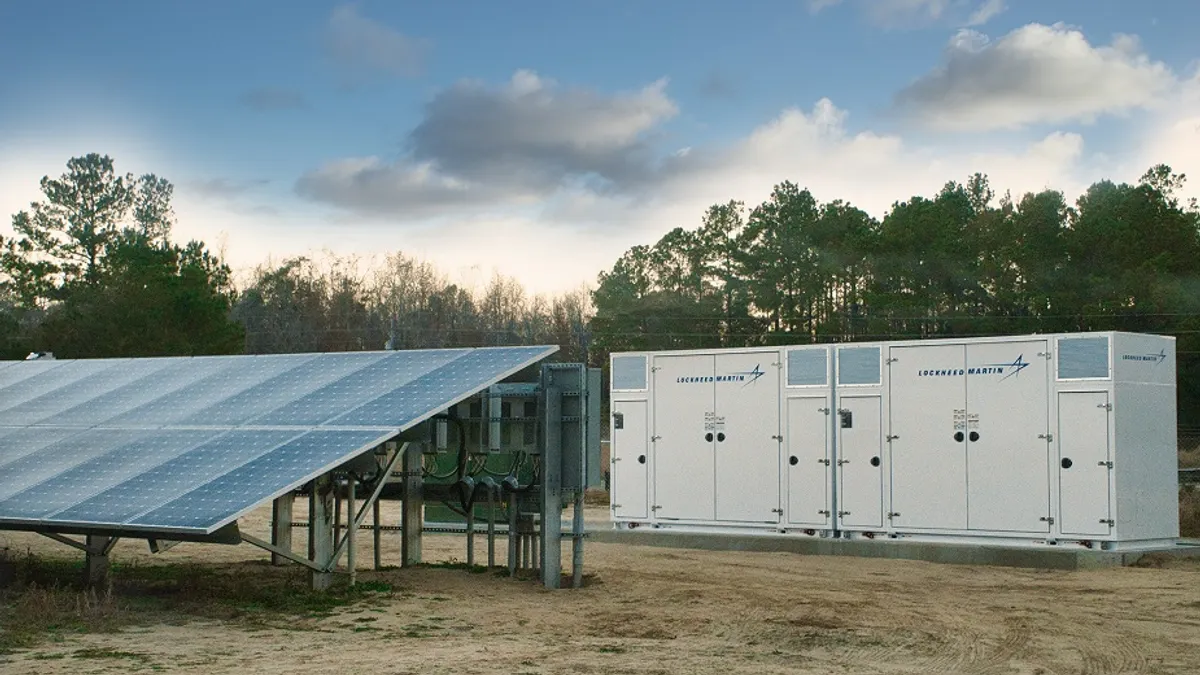Dive Brief:
-
A record-breaking 476 MW of storage resources were deployed in the U.S. in the third quarter of 2020 — a 240% increase over the previous record, which was set in the previous quarter — a December report from Wood Mackenzie and the U.S. Energy Storage Association (ESA) found.
-
The domestic battery energy storage market is set to grow sixfold to a total of nearly 7.5 GW — with a $7.3 billion annual market — by 2025, predominantly due to large-scale utility procurements, most of which will be paired with solar resources, according to the report.
-
The power industry is thinking of storage not as a down-the-road possibility, but as something that they could make happen today, said Ashley Wald, partner at the law firm Holland & Hart LLP. "It's not just that it's an afterthought, it's 'we want to do solar, and we're looking at solar-plus-storage as an initial part of the set up' — which I think is very different from previous years," Wald added.
Dive Insight:
The report tracks all grid-connected stationary storage, the vast majority of which this quarter — more than 99% — comprises lithium-ion batteries, Kelly Speakes-Backman, CEO of ESA, said in an emailed statement. A majority of the growth in the third quarter came from front-of-the-meter deployments, which amounted to almost 400 MW/578 MWh, driven by a few 1-hour systems in California like the second phase of the Gateway storage project.
According to the report, more front-of-the-meter resources were installed this quarter in Q3 than across all segments during any quarter in the last seven years. California, New Jersey and Arkansas led in terms of front-of-the-meter deployments in the third quarter, recording 510 MWh, 40 MWh and 10.5 MWh respectively.
But these numbers are only the beginning of a scale-up in the U.S. storage market, Dan Finn-Foley, Wood Mackenzie's head of energy storage said in a press release.
"Massive price declines and efforts to ensure eligibility have set the stage for exponential growth, and the curtain has only just risen on Act 1. Considering the scale of systems anticipated for 2021 we do not expect this record, as remarkable as it is, to stand for long," Finn-Foley added.
The residential storage market amounted to 52 MW and 119 MWh in the third quarter of 2020, continuing a trend of growth over the last six quarters. The sector is poised to expand sixfold in the next five years, particularly in New York, Massachusetts and the PJM Interconnection, Chloe Holden, Wood Mackenzie energy storage analyst, said in a press release.
The non-residential behind-the-meter market, however, was reduced by 3% compared to the second quarter of 2020, partly because of the COVID-19 pandemic.
Large-scale utility deployments are expected to spike next year, according to the report, with front-of-the-meter deployments occupying more than two-thirds of the forecasted U.S. storage market annually through the middle of the decade.
The COVID-19 pandemic has impacted the sector in certain ways — for instance, some states have seen delays for permit issuances, and there have been delays related to social distancing requirements, Wald said. But overall, the projects she's seen this year have stayed surprisingly on track.
"Everybody worried about it, everyone tried to account for it in their contracts between March and now," but the actual impact has been a lot less than expected, she explained.
Wald also expects the sector to continue growing, possibly even more rapidly than before, given the change of administration in Washington, D.C.
"This is a moment when things can really go in a different direction. Where the industry has been thriving over the last several years, now it really can take off in a way it couldn't have before, because it will have the administrative support," she said, adding that a lot of the change could be in the regulatory sphere, like figuring out the value of storage, ancillary services and so on.















